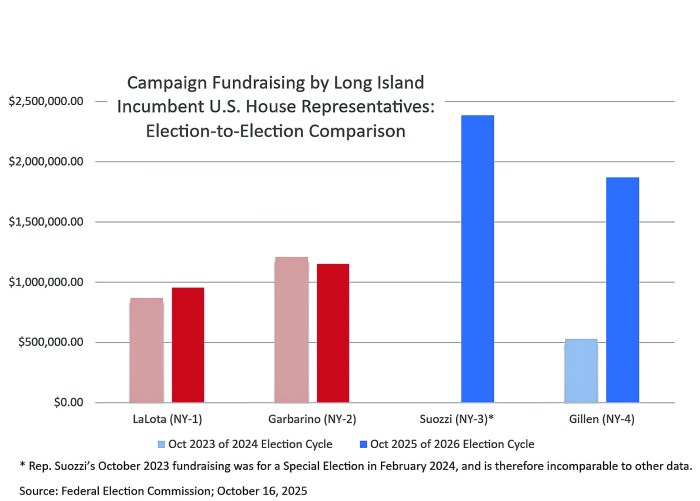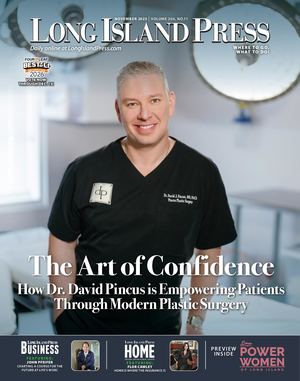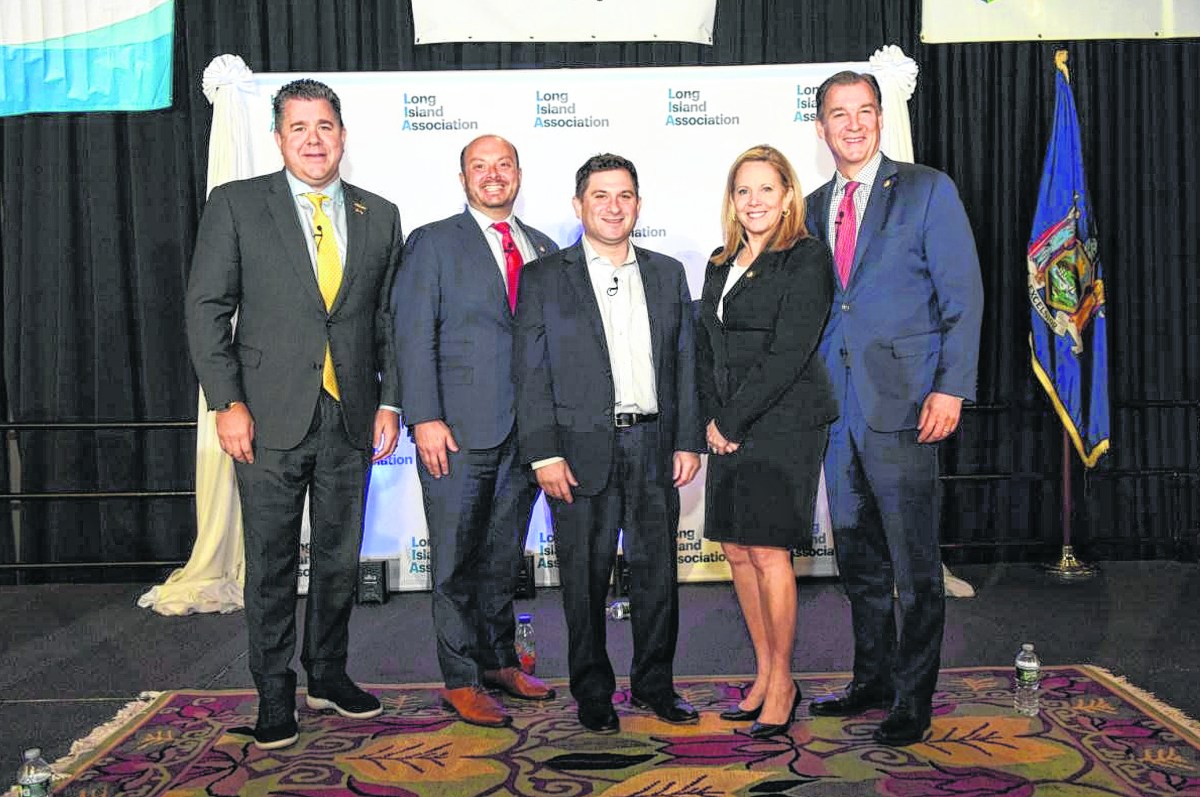New federal election finance data show how Long Island’s U.S. House Representatives are faring as they fundraise for their 2026 re-election drives, which could be their most expensive campaigns yet.
Mandatory reports filed with the Federal Election Commission on Oct. 15 show money pouring in for the two vulnerable Democrats, U.S. Rep. Tom Suozzi (D-Glen Cove) and U.S. Rep. Laura Gillen (D-Rockville Centre), while the two Republicans, U.S. Rep. Nick LaLota (R-Amityville) and U.S. Rep. Andrew Garbarino (R-Sayville), stay on par with previous performances.
“The midterms will be Democrats’ really only opportunity to kind of regain some leverage in the second Trump administration,” said Matthew Klein, an election analyst at The Cook Political Report. “Long Island is a notoriously unique place in American politics. It is really one of the few remaining regions in the country where we see voters swing with some degree of frequency.”
Republicans currently hold control of the House with a slim majority of six. How Long Islanders vote next year will be a significant factor in whether Republicans retain that control. Klein said it will be very hard, though not impossible, for Democrats to regain control of the House unless they hold both Suozzi’s and Gillen’s districts.
While more than a year away, candidates’ abilities to fundraise now is an indicator of how strong a campaign they will be able to run later, and the strength of the support behind them.
So far in the 2026 election cycle, Gillen has raised $1,870,632, including $613,254 between July 1 and Sept. 30. She won her district for the first time in 2024, beating former U.S. Rep. Anthony D’Esposito (R-Island Park) by less than two percentage points in what was the closest House race on Long Island and one of the most competitive in the country. Gillen may also face a primary election in 2026.
“I’m proud to represent Nassau County in Congress and am focused on bipartisan solutions that matter most to Long Islanders: lowering costs and keeping our communities safe,” Gillen said in an emailed statement. “I’m building a campaign that brings Democrats, Republicans and Independents together to move Long Island forward,” she added.
Suozzi raised a total of $2,386,655, including more than a million dollars in the last quarter. After losing his bid for governor in 2022, Suozzi returned to the district he previously represented to win a Special Election in February 2024. He went on to win another full term later that year in what was another very close race. At present, no other candidates have declared their candidacy in this race.
Garbarino raised $1,153,970, including $419,148 between July 1 and Sept. 30. Previously held by Rep. Peter King, Garbarino first won the district in 2020. Viable Democrat candidate, former State Assembly Member Pat Halpin, also reported raising $218,948 during the same period.
LaLota raised a total of $953,643, roughly a third of it in the last quarter. LaLota has held the East End district since winning in 2022, when former U.S. Rep. Lee Zeldin (R-Shirley) stepped down. Another viable Democrat candidate, Chris Gallant, reported raising $217,828 during the same period.
“Wins like quadrupling SALT and the fear of a total socialist takeover of New York have rallied commonsense conservatives like me and taken the wind out of the sails of challengers like my opponents,” LaLota said in an emailed statement.
“My entire career has been in service to our country,” Gallant said in an emailed statement, “this campaign is an extension of that same mission.”
All candidates were asked to comment on their fundraising reports.

While too early to directly compare them to opposition candidates, one way to judge how the incumbents are faring is to compare them to where they were at this point during the last full election cycle.
Both Republican incumbents are fundraising at levels similar to this time two years ago. Gillen, however, is showing a stronger fundraising performance in comparison to her last election. Suozzi, who was running in an imminent special election following the expulsion of disgraced ex-Rep. George Santos two years ago, doesn’t have directly comparable data: He has raised the most during this election cycle.

Members of the House are required by law to keep governing and campaigning, including fundraising, separate. However, sitting House Representatives and Senators running for re-election typically spend significant time fundraising, even while Congress is in session. Former U.S. Rep. Steve Israel said recently, during a bipartisan online event hosted by the R Street Institute, that when he left Congress in 2017 representatives from competitive districts were expected to spend 30 hours a week fundraising.


































